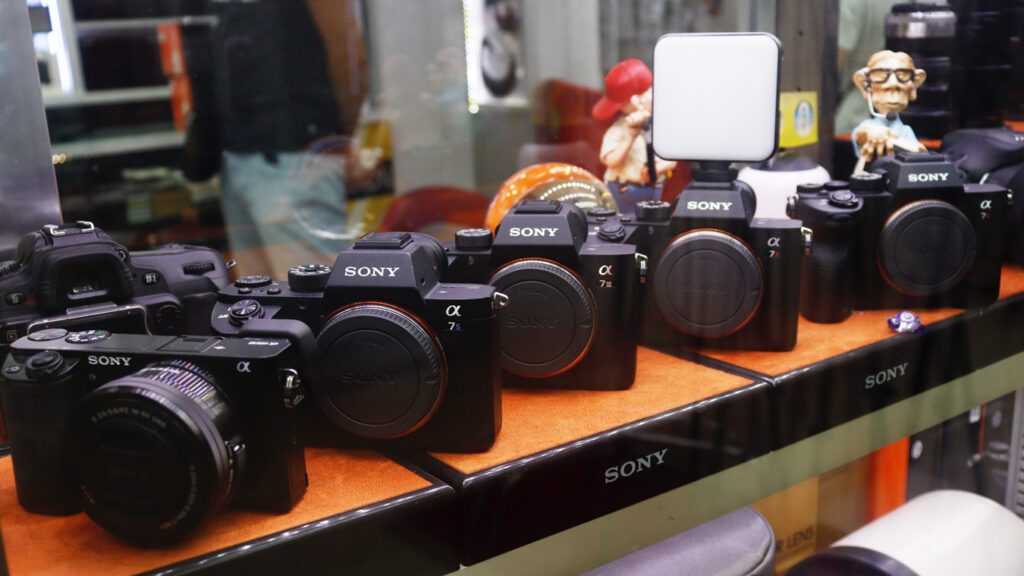Sony has been at the forefront of mirrorless camera advancement for over ten years, making it one of the most prominent and renowned manufacturers globally.
Sony continues to be a creative company that has made significant contributions to the development of the mirrorless market, whether it be by pushing the limits of autofocus or creating one of the most portable full-frame cameras on the market.
Fortunately, they provide a wide range of solutions to fit every requirement and skill level, so you can be sure to find anything.
It is against this backdrop that this article, therefore, would focus on the five best Sony camera that is tailored to anyone’s budget.
SONY A7IV
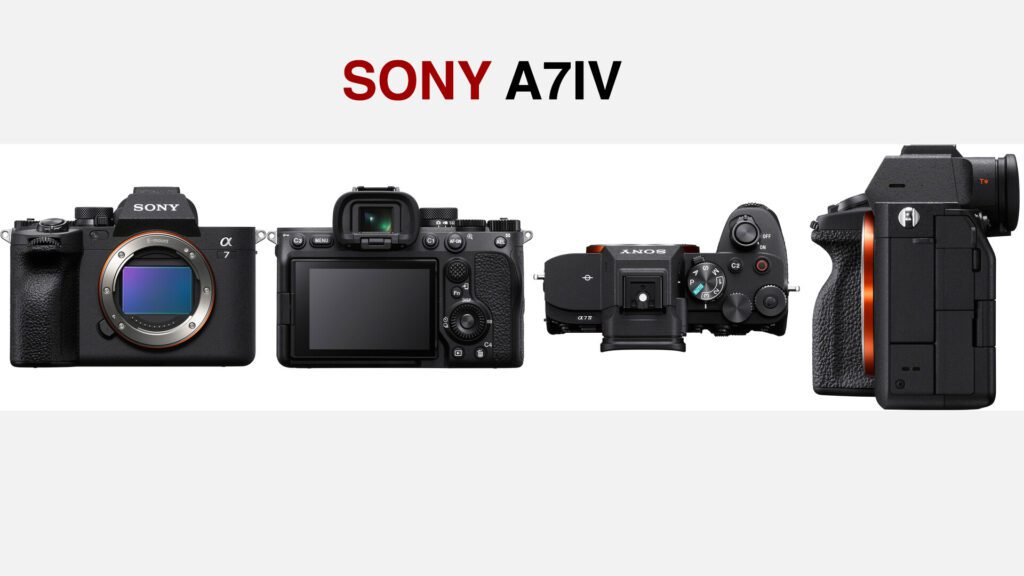

The Sony A7IV is a fully functional hybrid camera. It has a 33MP sensor that is excellent for printing and a lot of dynamic range for high-contrast subjects. It will be difficult for sports and action photographers to find an autofocus technology that is faster and more precise. It is also a video powerhouse, offering high bit rates for better-quality video, unlimited recording time, and a variety of frame rates to capture everything from slow motion to cinematic film.
With a durable weather-sealed body, a versatile touchscreen, and a high-resolution electronic viewfinder that gives you a clear view of your subject—not to mention dual SD card slots for additional storage and all the ports you need for video peripherals—it is not only well-suited to a variety of photo and video styles but it is also built to last. In addition, it has one of the finest mirrorless camera battery lives that we’ve tested. The lack of portability that results from all that technology and processing power is a drawback, but if you want the best of the best without going pro, this is the Sony camera to buy.
PROS
- Incredible dynamic range.
- A sturdy, weatherproof construction.
- Outstanding battery longevity in photo mode.
- Excellent handling of RAW noise.
- Enhanced menu system.
CONS
- Not portable.
SONY A7III
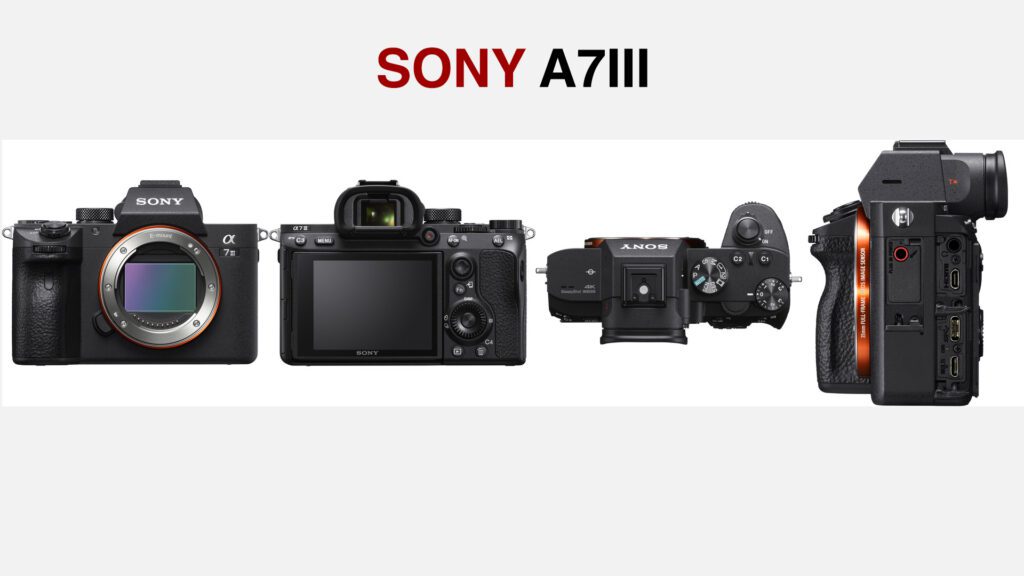

The Sony A7III is still a superb camera despite its age if the Sony A7IV is out of your price range. It is one of the greatest Sony cameras for photography even though it has unquestionably outdated video features. Even though it isn’t weather-sealed, its full-frame sensor provides amazing image quality, and it seems solidly constructed despite not being weather-sealed. Given the value you receive with this camera, having to use Sony’s outdated and unintuitive menu system is a small drawback.
The Sony α7C, which is effectively a7III compressed into a smaller chassis, is an option if you’d prefer something more portable. Some minor improvements have been made, such as improved colour science and a newer autofocus mechanism, but you also lose some of the knobs and controls and receive a considerably smaller viewfinder. The advantage of the smaller size may or may not be significant depending on the size of your lens. With smaller prime lenses, it does, however, make for a fantastic high-quality travel camera in this price range.
PROS
- The build quality is great.
- Superb dynamic range.
- Excellent noise reduction.
CONS
- Not very portable.
- The menu system is challenging to use.
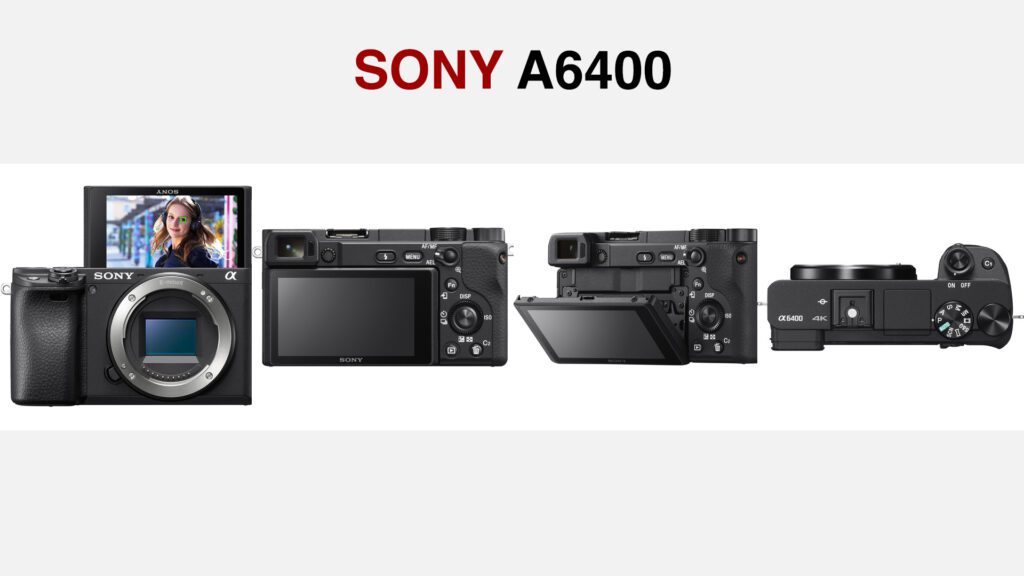

For those looking to save even more money, Sony’s APS-C Alpha series is an excellent compromise for those just starting and those looking for a more portable setup. The Sony 6400 is the genuine mid-range option in the collection, falling between the more expensive Sony 6600 and the Sony 6100, which is better suited for beginners. A decent mix of functionality and affordability is provided by this camera, which lacks built-in image stabilisation like the 6600 but has a higher-resolution viewfinder and a more durable body than the Sony 6100.
An APS-C sensor won’t provide images with quite the same quality as one of the full-frame alternatives mentioned above, of course. Although there won’t be much of a difference unless you’re a pro, you can still take stunning pictures with these cameras. They work well for video as well, especially for vlogs and home movies. Finally, the portability of all of these cameras makes it convenient to carry a camera around with you.
PROS
- Amazing autofocus performance.
- Outstanding photo quality.
- Solid and portable design.
CONS
- A lack of ergonomics is evident.
- The interface is not user-friendly
Sony ZV-E10
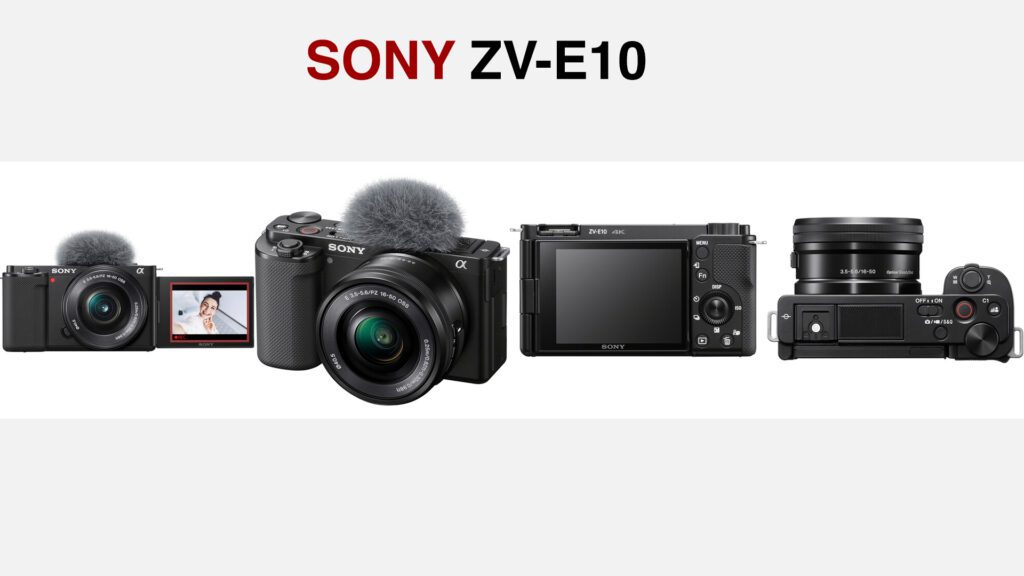

The greatest entry-level camera in Sony’s line-up is the ZV-E10. Although it was made with vloggers in mind, it is a great bargain camera that also performs admirably for photography as long as you don’t mind compromising a viewfinder. With the addition of a completely articulating screen that makes it simple to keep an eye on yourself when recording or taking selfies, it uses the same sensor as the Sony 6400 camera mentioned above. An improved internal microphone and a headphone port are additional upgrades.
Although it’s designed for video, it can take photos just as well as the Alpha cameras, with excellent overall image quality and rapid burst shooting. The battery life is also quite good. Even though its Autofocus isn’t quite as solid as that of higher-end Sony cameras, it’s still generally highly efficient. In the end, if you don’t need a viewfinder, this is a fantastic low-cost solution for new users and vloggers.
PROS
- The screen is fully articulated
- Long-lasting battery.
- Excellent autofocus.
- No time limit on the recording.
CONS
- No In-Body Image Stabilization (IBIS).
- Unreliable Autofocus as compared to other Sony Cameras
- The rolling shutter effect is evident.
Sony RX100 VII


Even if smartphones have evolved into the best pocket cameras, a good point-and-shoot camera has its merits. With seven versions of the Sony RX100 VII, Sony has filled the market for high-end small cameras. A built-in zoom lens and its high portability make it the perfect camera for travelling. With a 24-200mm equivalent full-frame focal length range, it can capture everything from wide-angle images to close-up photographs of distant subjects. In addition, it’s good to have extra functions like a flash and a pop-up viewfinder.
While it has a larger one-inch sensor than most compact cameras, the image quality is still inferior to that of larger-sensor cameras while producing extremely good photographs. You don’t have to be concerned about missing focus with moving subjects because of its highly dependable and efficient autofocus system. The vlogging-focused Sony ZV-1, which employs the same sensor and Auto Focus Technology, is an excellent cheaper alternative if you don’t mind giving up the viewfinder and some zoom range. Both cameras have poor battery life, but if you want something small and portable, point-and-shoots like these are fantastic choices.
PROS
- Portable and lightweight design.
- Excellent focusing performance in video and pictures.
- Outstanding quality of the image.
CONS
- Holding it is uncomfortable.
- Minimal battery life.
In conclusion, Sony is known for its expertise in various technological areas, such as headphones and televisions. Most Sony cameras possess excellent image sensors, reliable autofocus systems, and are easily portable. Undoubtedly, Sony holds a significant impact on the present camera market, despite occasional perceptions of their designs lacking emotional appeal and being primarily focused on practicality.
